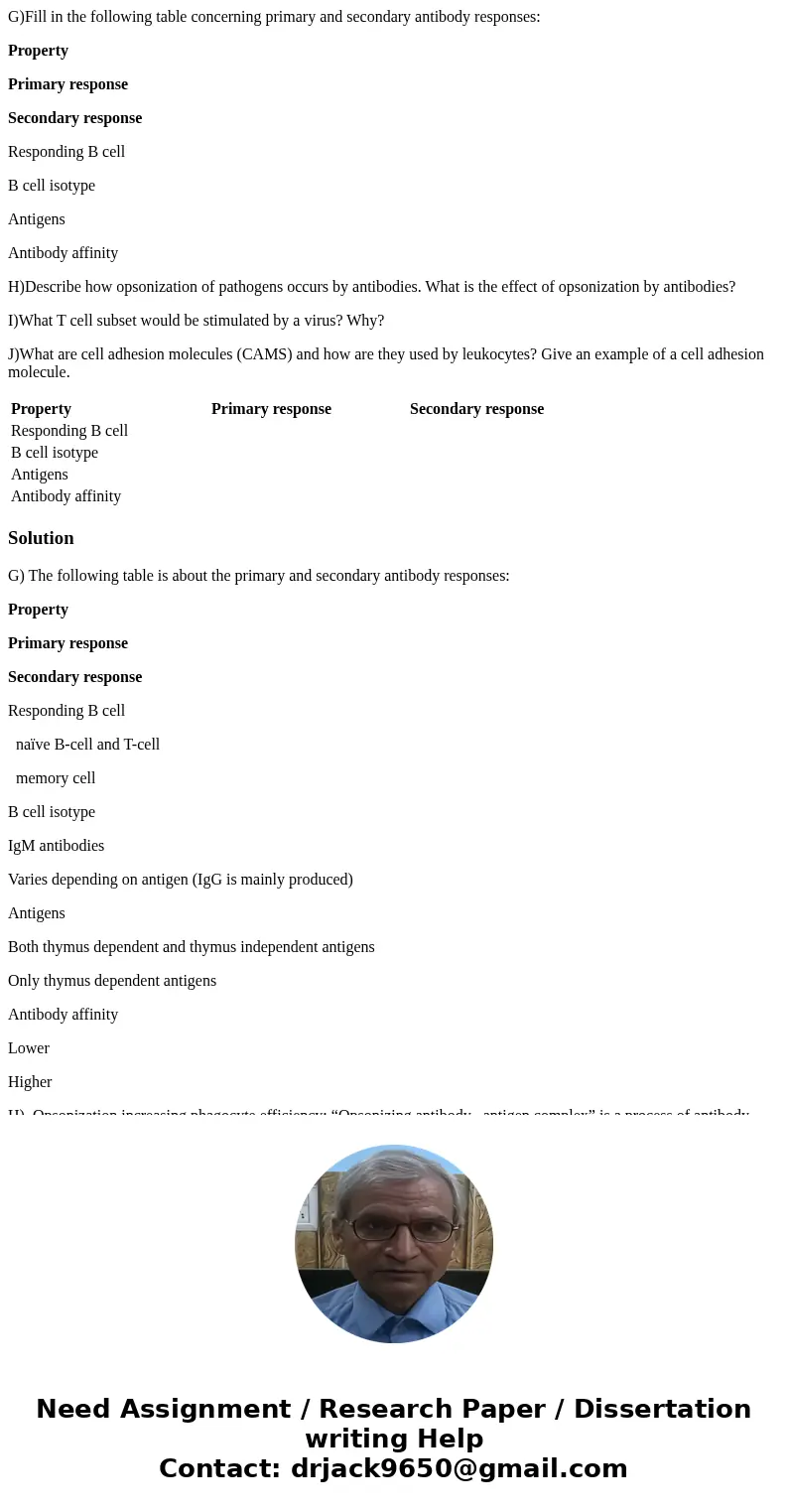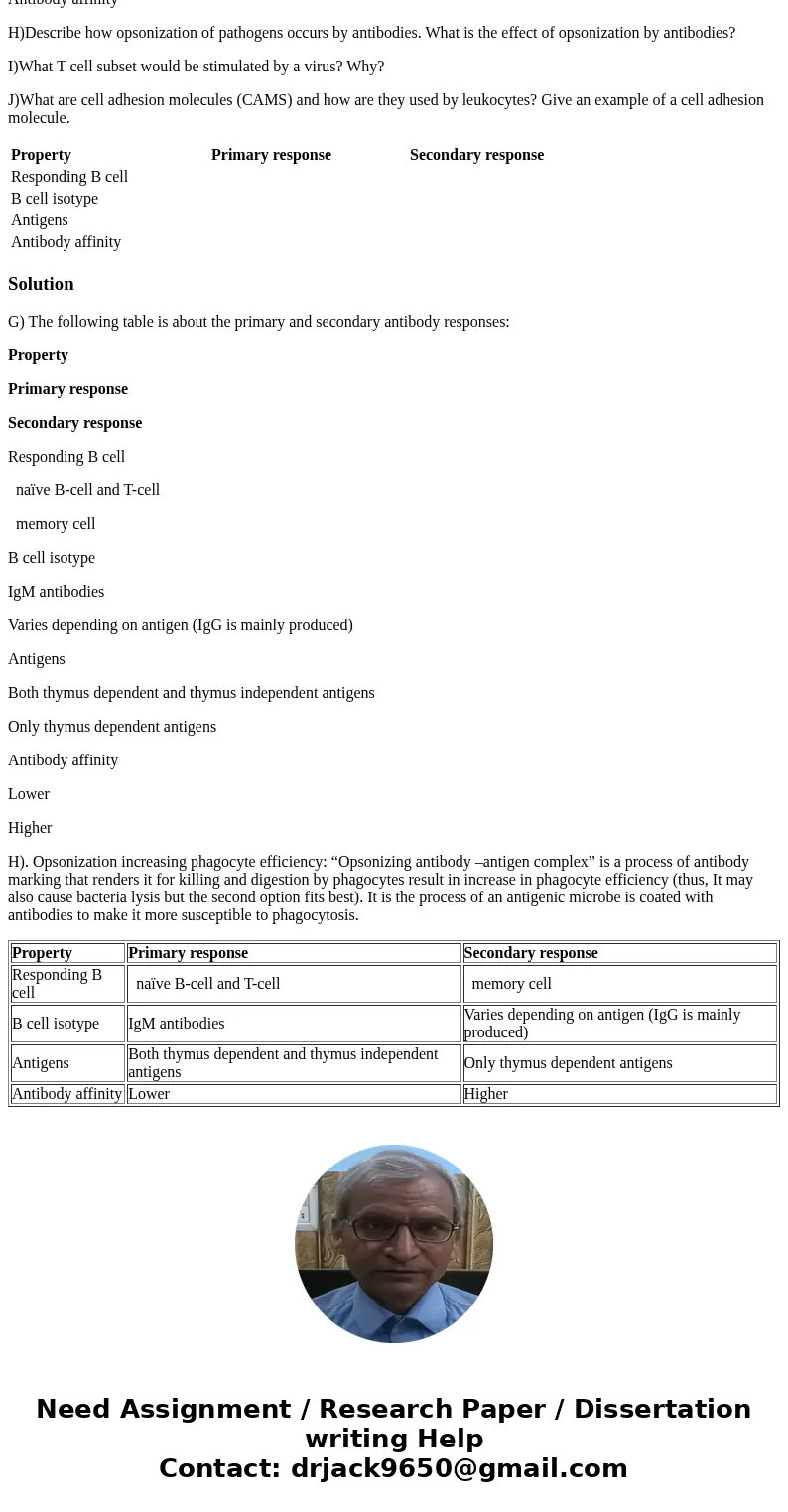GFill in the following table concerning primary and secondar
G)Fill in the following table concerning primary and secondary antibody responses:
Property
Primary response
Secondary response
Responding B cell
B cell isotype
Antigens
Antibody affinity
H)Describe how opsonization of pathogens occurs by antibodies. What is the effect of opsonization by antibodies?
I)What T cell subset would be stimulated by a virus? Why?
J)What are cell adhesion molecules (CAMS) and how are they used by leukocytes? Give an example of a cell adhesion molecule.
| Property | Primary response | Secondary response |
| Responding B cell | ||
| B cell isotype | ||
| Antigens | ||
| Antibody affinity |
Solution
G) The following table is about the primary and secondary antibody responses:
Property
Primary response
Secondary response
Responding B cell
naïve B-cell and T-cell
memory cell
B cell isotype
IgM antibodies
Varies depending on antigen (IgG is mainly produced)
Antigens
Both thymus dependent and thymus independent antigens
Only thymus dependent antigens
Antibody affinity
Lower
Higher
H). Opsonization increasing phagocyte efficiency: “Opsonizing antibody –antigen complex” is a process of antibody marking that renders it for killing and digestion by phagocytes result in increase in phagocyte efficiency (thus, It may also cause bacteria lysis but the second option fits best). It is the process of an antigenic microbe is coated with antibodies to make it more susceptible to phagocytosis.
| Property | Primary response | Secondary response |
| Responding B cell | naïve B-cell and T-cell | memory cell |
| B cell isotype | IgM antibodies | Varies depending on antigen (IgG is mainly produced) |
| Antigens | Both thymus dependent and thymus independent antigens | Only thymus dependent antigens |
| Antibody affinity | Lower | Higher |


 Homework Sourse
Homework Sourse